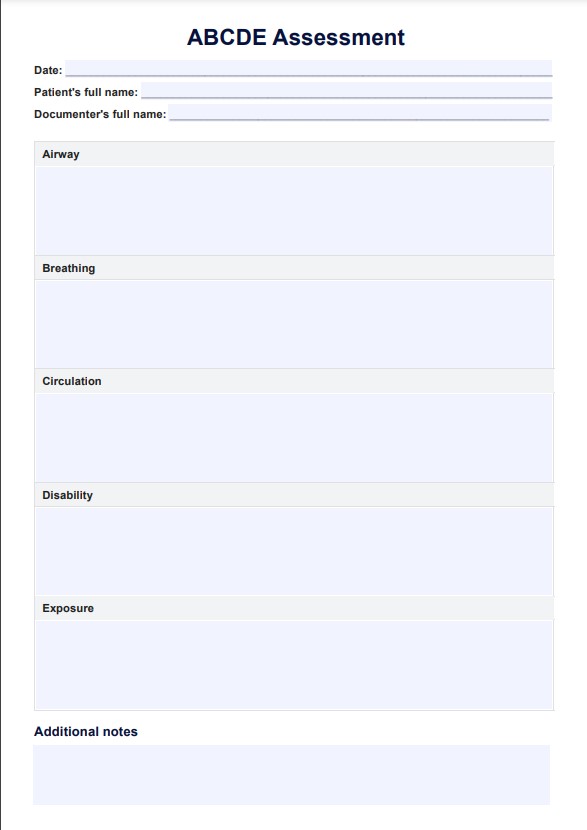That depends on the condition of the patient. You need to remember that all the procedures are done rapidly to stabilize the patient as soon as possible and maintain them in a stabilized state.

ABCDE Assessment
Document your patient's condition and your interventions on our ABCDE Assessment template.
ABCDE Assessment Template
Commonly asked questions
Whenever a patient is rushed to an emergency department, critical care, intensive care, or resuscitation room if they are on the verge of death because of a life-threatening illness or injury. Any of these scenarios require an ABCDE assessment to get more favorable patient outcomes.
They will address the problem. The procedure will be different depending on the problem. One ABCDE assessment example is the medical staff detects airway obstruction in unconscious patients during the Airway assessment stage. They need to clear the obstruction and then reassess the patients.
EHR and practice management software
Get started for free
*No credit card required
Free
$0/usd
Unlimited clients
Telehealth
1GB of storage
Client portal text
Automated billing and online payments











